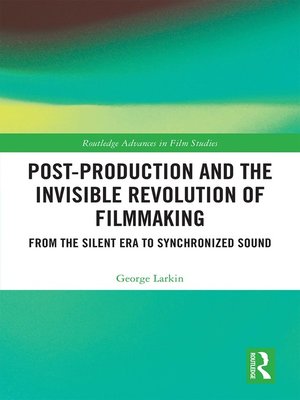Post-Production and the Invisible Revolution of Filmmaking
ebook ∣ From the Silent Era to Synchronized Sound · Routledge Advances in Film Studies
By George Larkin

Sign up to save your library
With an OverDrive account, you can save your favorite libraries for at-a-glance information about availability. Find out more about OverDrive accounts.
Find this title in Libby, the library reading app by OverDrive.



Search for a digital library with this title
Title found at these libraries:
| Library Name | Distance |
|---|---|
| Loading... |
Post-Production and the Invisible Revolution of Filmmaking studies the discourses surrounding post-production, as well as the aesthetic effects of its introduction during the 1920s and 1930s, by exploring the philosophies and issues faced by practitioners during this transitional, transformative period.
The introduction of post-production during the transition from silent cinema to the synchronized sound era in the 1920s American studio system resulted in what has been a previously unheralded and invisible revolution in filmmaking. Thereafter, a film no longer arose from a live and variable combination of audio and visual in the theater, as occurred during the silent film era, where each exhibition was a singular event. The new system of post-production effectively shifted control of a film's final form from the theater to the editing room. With this new process, filmmakers could obtain and manipulate an array of audio elements and manufacture a permanent soundtrack. This transition made possible a product that could be easily mass-produced, serving both to transform and homogenize film presentation, fundamentally creating a new art form.
With detailed research and analysis and nearly 50 illustrations, this book is the ideal resource for students and researchers of film history and post-production.







